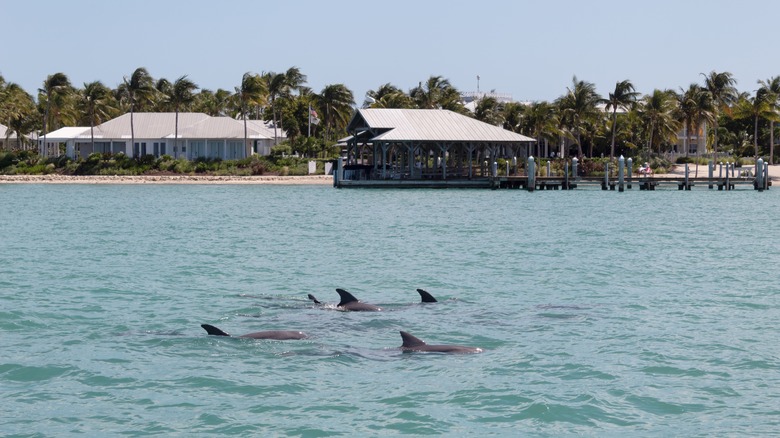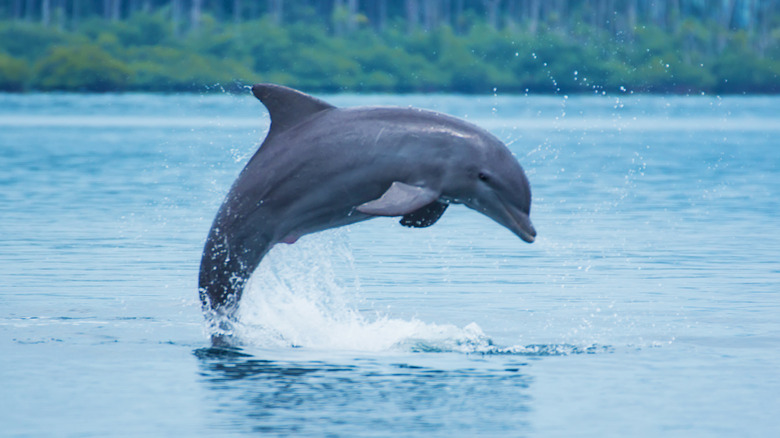How To Spot Dolphins From The Shore On Your Next Beach Vacation
When you're on vacation to a beach destination that offers dolphin-sighting tours, that usually involves hopping in a boat and going far out onto the blue surf in search of the pods. However, if you're on a budget, some of those dolphin boat tours might fall out of your price range. So is it possible to still cross dolphin-spotting off your bucket list if you stay on shore? It turns out: definitely.
In 2010, CTV News reported that a whopping 150 white-sided dolphins were spotted just off the shore of Vancouver's Horseshoe Bay, and this came just days after whales came close to shore as well. Marine biologist Lance Barrett-Lennard told the outlet that dolphins tend to swim where they can find food, so the only reason they might come close to shore is because they've scouted a food source there like herring, "but we certainly don't get to see them this close to home very often."
If you're going to stay on the beach rather than the boat, there are some techniques and tips you can employ to make sure you spot a pod of flippers, and it doesn't take any fancy equipment beyond having a keen eye to detail and keeping your eyes trained on the water's surface. Here's how.
Keep a look out for splashes
2010 wasn't the last time dolphins were spotted from the Vancouver shore. In 2022, 100 dolphins were spotted and photographed by a local Vancouver Island woman just walking along a pier, per Vancouver Island Free Daily. En-Vols reports that there are also many spots along the Saint-Lawrence river that runs through Quebec where you can also easily spot dolphins from the shore.
If you've got yourself a good pair of binoculars, Fun Orange County Parks recommends standing on the shore and looking for the tell-tale dorsal fin of a dolphin popping out of the water's surface. However, it turns out you can ditch the binoculars and just use your line of sight for the best dolphin-spotting possibilities. Whale-watching tour operator Davey's Locker writes on their official website that, "The best technique for spotting whales and dolphin is to scan the horizon line." That's because dolphins will make a little splash when they come to shore, and if the water is especially calm, those splashes are easier to spot. We know dolphins are mammals, so they also need to breath air, meaning you might see the gusts and bursts of air at the surface as well. Florida boat tour company John's Pass advises going on a cloudy day so the sun doesn't blind you, and scan the surface "from left to right, then moving back to the right. Look for something new and check for any disturbances in the water."

